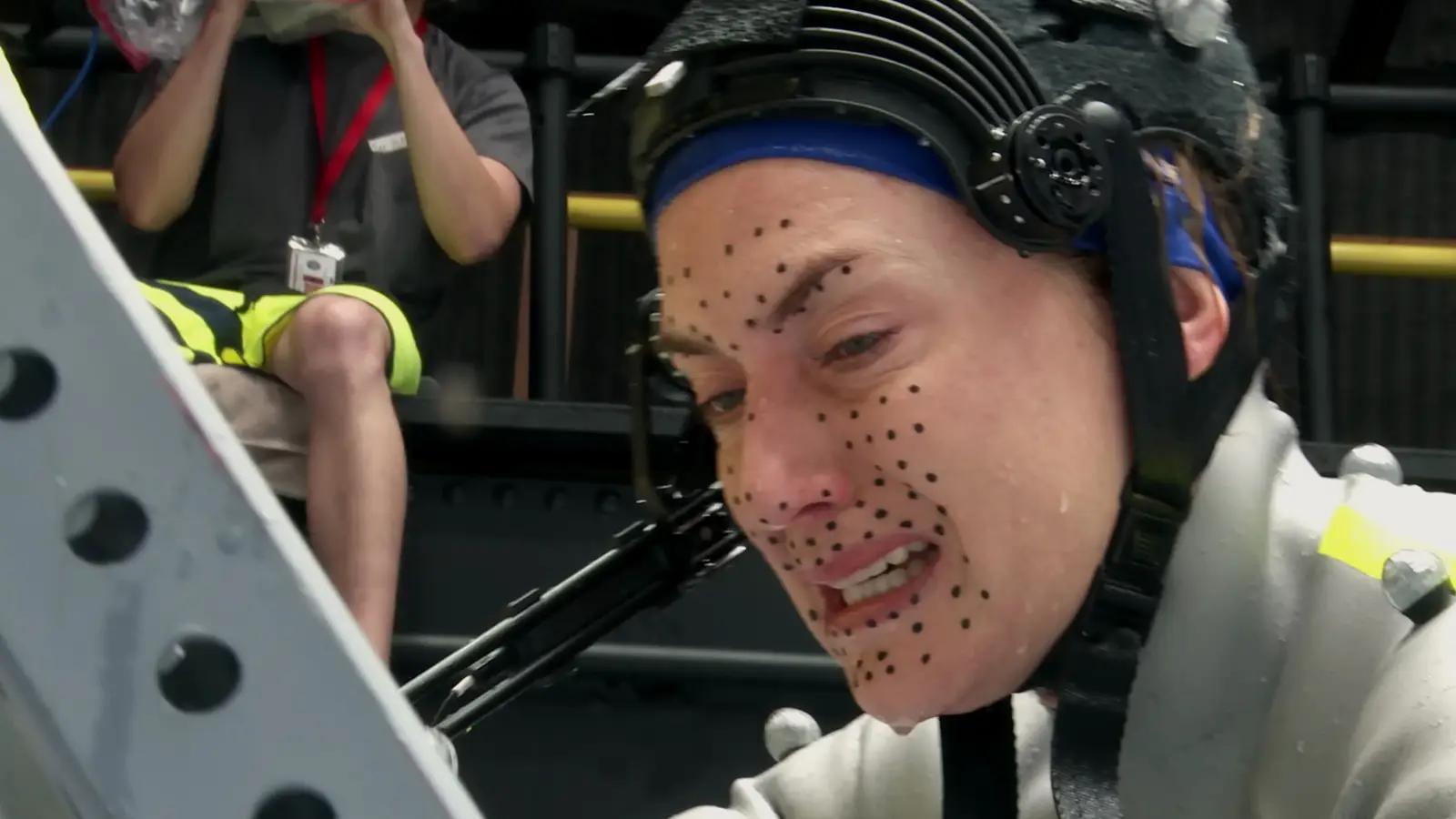Copyright Polygon

James Cameron’s 2009 movie Avatar was supposed to follow on the heels of Titanic, but Cameron needed more time to get it just right. 2022’s Avatar: The Way of Water was set for release just a few years after Avatar, but James Cameron needed more time to get it just right. This December’s Avatar: Fire and Ash was due out in 2024, two years after The Way of Water, but James Cameron needed more time to get it just right. No one has bent the Hollywood blockbuster machine to his will like Cameron. And no director has ever seemed less fazed about wielding perfectionism as a weapon. Yet from the get-go of the new Disney Plus documentary Fire and Water: Making the Avatar Films, the 71-year-old director — still driven, still bursting with creativity — is on the defensive. After dedicating half his professional career to exploring the Na’vi homeworld of Pandora, the mad genius clearly has a legacy to protect. And he’s right to snap back to skeptics, haters, and cynics, even preemptively: At a time when billionaire tech bros think they can make animated movies out of thin air using a couple of GPT prompts, and the loudest online know-it-alls claim everything they hate is “made with AI,” Cameron combats the myths of the moment with one of the most tech-heavy making-of documentaries I’ve seen since the heyday of David Fincher DVD releases. Cameron explains the existence of Fire and Water in the documentary’s opening minute: “Avatar movies are not made by computers.” Made with computers? Undoubtedly. Generated by a bunch of Sam Altman disciples in Silicon Valley cubicles? As if. To produce The Way of Water and Fire and Ash, Cameron spent an ungodly amount of money on building vehicles, sets, and one-of-a-kind motion-capture tools that could accurately depict alien buoyancy both underwater and on the surface. Watching Avatar stripped down to its raw elements — seeing things like Kate Winslet weeping over a dying tulkun represented by a pool noodle cable-tied to a metal grate — is almost as astonishing as the finished product. As poetic as Cameron can be about the art of storytelling, and the need to imbue CG characters with the human element, he’s also a total bro who loves to crush goals. Some guys flip tires at CrossFit; Cameron makes Avatar movies. “The second you decide to make a movie underwater,” he says early on in Fire and Water, “you’ve just opened up a gigantic can of whup-ass on yourself.” Based on the footage, that seems accurate. While the filmmaker and actors Sam Worthington, Zoe Saldaña, and Sigourney Weaver made clear during the Way of Water press cycle that filming the sea-set Avatar movies was a grueling physical process, hearing explanations of what went into building the elaborate tanks and rigs, and watching actors suspend their disbelief while submerged for minutes at a time, is mind-boggling. Cameron is like a real-life Willy Wonka as he brings us into the bespoke environments that replicate the Pandoran ocean — complete with wave settings! — and explains why he needed stunt guys on “jetavators” to properly simulate the flying-to-swimming motions of the Na’vi’s pet skimwings. According to the doc, Cameron’s crew proposed — and maybe begged — for Cameron to shoot his movies “dry for wet,” and rely on cable riggings for “underwater” motion capture. No dice. “There’s no hiding from the physics when you are doing capture,” Cameron says. So his VFX team developed not just a way to capture the zero-G movement of swimming underwater, but the even more precarious motion of plunging from above water to below. The demand for different light spectrums presented the Avatar team with approximately 8 billion problems to solve, and Fire and Water goes surprisingly deep in explaining the solutions. It’s hard to imagine any filmmaker having the R&D budget of the Avatar movies ever again, but just in case, Cameron has left a definitive document to prove you can do just about anything if you commit to never saying “no.” Perfectionism can come back to haunt great directors. (See: almost anyone who worked with Stanley Kubrick.) But as his troupe puts it in the documentary, Cameron’s specific Avatar gauntlet may have a New Age effect on the beings who make it out the other end. Adult and kid actors alike were put through breath training with the world’s greatest divers, learning how to exhaust all the carbon dioxide from their bodies before descending for two- or three-minute underwater takes. To spectators, the work looks like an Olympic sport: deep breathing for minutes at the surface, diving under the pool of motion-capture spheres, swimming in specific patterns with full Na’vi hair braids dangling in your face. But Saldaña, who hates swimming, talks about it like Cameron’s tank work was a Stella Adler masterclass. “I hated stopping,” Weaver says of one scene where she sat at the bottom of the pool pretending to caress glowing squid creatures. “It was such a treat to do that. I was making it last as long as I could.” Mind you: Everyone had to wear nose plugs to avoid emitting any bubbles, which screwed with the motion capture cameras. Over 30 years (and counting!), Cameron has taken massive amounts of leonopteryx doo-doo for throwing his entire self at the Jake Sully Chronicles. Yet, despite record-breaking box-office returns and rave reviews, the Avatar movies — two more are planned after Fire and Ash — continue to be seen as a folly by haters who insist on looking a gift direhorse in the mouth. Fire and Water clarifies how a person could become so dedicated to the project: Every part of the brain is required to do even a half-assed version of an Avatar movie. Riggers say Cameron crunched the numbers to figure out how much water needed to be pumped into an underwater ship set so that a door would pop open at the exact right moment in relation to the framing of the characters. He hired choreographers to design specific swim strokes for the Na’vi, costumers to create the alien appendages that would allow them to conduct those motions underwater, and an underwater parkour guy to design action fit for the movement. To simulate whale-hunting on open alien waters, a normal director working under the constraints of a judicious movie studio might toss a bunch of actors on a half-built boat, and gyrate it back and forth in front of a blue screen. Cameron, on the other hand, went out and motion-captured high-speed prototype boats so he could feed the physics data into gimbals so every wave hit was accurately represented. Just nuts! At the time of The Way of Water, I was blown away by what I felt was Cameron’s physical work behind the scenes paying off when gussied up in the latest and greatest CGI. Fire and Water unraveled the full extent of the effort. Avatar took years longer than Cameron had anticipated because Wētā FX had to jump the uncanny valley to find the glimmer of life in the eyes of CG characters. The Way of Water suggests it was much more than that: There are actions in life that the brain can’t calculate, and performance quirks that go beyond “improvisation.” When a mocap-suited Avatar actor steps onto a sculpted tulkun backside, and a blowhole shoots up water they weren’t expecting, a flash of fight-or-flight instinct ripples through their body. That’s what Cameron, and hundreds of millions of dollars, are able to imbue in The Way of Water that no traditionally animated movie ever could. Cameron fumes on screen over his movies being confused for elaborate DreamWorks cartoons (“It drives me nuts when people say ‘Sigourney voiced Kiri” — Sigourney worked on these two films for 18 months!”), but he doesn’t throw shade at traditional animation. Far from it: he has room in his heart for every type of craft. He really has only one enemy: imitators. By the end, Cameron makes the subtext of Fire and Water text in a blunt attack against AI. “I think people think we wave a magic wand,” he says. “We don’t use generative AI, we aren’t making images up out of nothing.” While Fire and Water slips a bit into practical-vs.-digital-effects mythology (at one point, Worthington says, “There is not one thing you see us do that is animated,” which is absolute malarkey), Cameron drops an important hammer on escalating conversations around how computer technology can help us cut corners. Mainly: He won’t do it, and true artists don’t. The director isn’t giving up on craftsmanship even in the hyper-digital age. He’s never given an inch in 30 years, so why start now? Fire and Water: Making the Avatar Films is streaming now on Disney Plus



